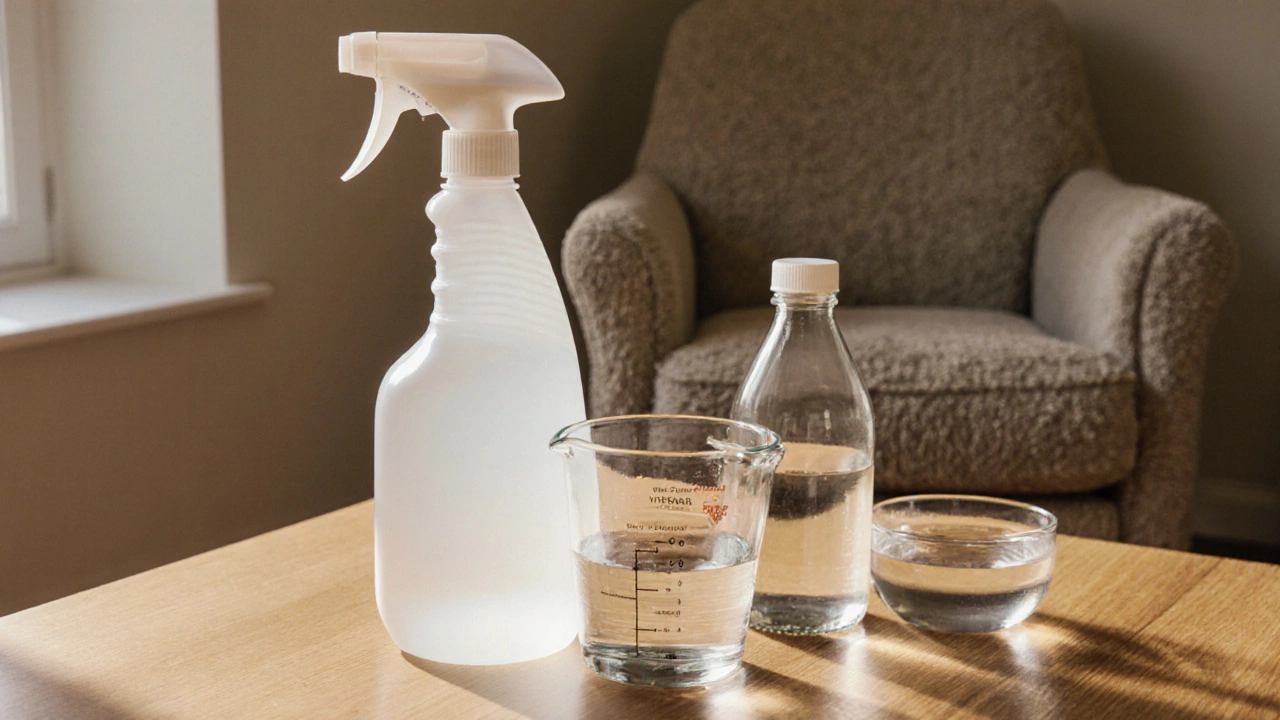Vinegar Fabric Cleaning – Simple DIY Tips
When tackling vinegar fabric cleaning, a low‑cost, eco‑friendly method for freshening upholstery and removing stains. Also known as vinegar upholstery wash, it lets you avoid harsh chemicals while keeping sofas and chairs looking new. This approach blends everyday kitchen vinegar with water, creating a mild acid that breaks down grime without damaging fibers. Below you’ll see how this technique links to other cleaning concepts and why it’s a go‑to for many UK households.
Why Vinegar Works and What It Can Do
The star of the show is vinegar, a 5‑6% acetic acid solution that cuts through grease, neutralises odors and loosens dirt. Also called white distilled vinegar, it’s safe for most home uses when diluted properly. Because the acid is weak, it won’t eat away at polyester or cotton if you stick to recommended ratios. Vinegar’s natural deodorising power also means you can eliminate pet smells from a couch without spraying synthetic fragrances.
Next up is the fabric, the woven material of sofas, chairs and curtains that varies in weave, fiber content and finish. Knowing whether you have a synthetic blend, delicate silk, or sturdy microfiber guides how much vinegar you can apply. Most polyester‑cotton mixes handle a 1:1 vinegar‑water mix, while silk prefers a gentler 1:3 dilution. The fabric type also dictates drying time; breathable natural fibers dry quicker than dense microfiber.
Stains are the real challenge that brings vinegar fabric cleaning into focus. A stain removal, the process of breaking down and lifting discolorations caused by food, drink, ink or pet accidents, often requires a targeted approach. Vinegar attacks protein‑based spills like wine or urine by denaturing the proteins, while it dissolves oily residues from butter or grease. For a coffee ring, a quick dab of diluted vinegar followed by a blot with a clean cloth usually lifts the mark without leaving a water spot.
What makes this method especially appealing is its eco‑friendly profile. Using household vinegar reduces reliance on commercial cleaners that contain phosphates, synthetic fragrances or harsh surfactants. In the UK, greener cleaning aligns with rising consumer demand for sustainable home care, and vinegar’s biodegradability means it won’t linger in waterways. Pairing vinegar with a bit of baking soda for a fizzing action can boost cleaning power while staying completely natural.
Safety is key, though. Always test the solution on an inconspicuous seam before treating a visible area; this prevents unexpected colour bleeding. A good rule of thumb is to spray the mixture onto a cloth, not directly onto the upholstery, then gently blot. Avoid saturating the fabric – excess moisture can lead to mould growth inside cushions. For families with young children or pets, keep the cleaning area well‑ventilated, and store any leftover vinegar solution out of reach.
Common mistakes include using straight vinegar on delicate fabrics and neglecting to rinse after cleaning. If you skip the rinse step, residues can attract dirt faster. A light mist of plain water after the vinegar treatment restores the fabric’s natural feel. When tackling tough, set‑in stains, pre‑soak the spot for five minutes before blotting. If vinegar alone doesn’t cut it, consider a hybrid approach: a few drops of mild dish soap mixed with the vinegar solution can break down stubborn grease without compromising the fabric’s integrity.
Armed with these basics, you’ll find that vinegar fabric cleaning is a versatile tool for everyday upkeep and occasional deep‑clean sessions. Below you’ll discover a curated set of articles that walk you through pressure‑washing basics, safe surface prep, and other DIY cleaning hacks that complement the vinegar method. Dive into the posts to expand your toolkit, learn exact soak times, and pick up pro tips for keeping every room in your home spotless.

Can I Clean Upholstery with Vinegar and Water? The Full DIY Guide
Learn how to safely clean upholstery using a simple vinegar‑and‑water mix, with step‑by‑step instructions, stain‑specific tweaks, safety tips, and when to call a pro.
Read More